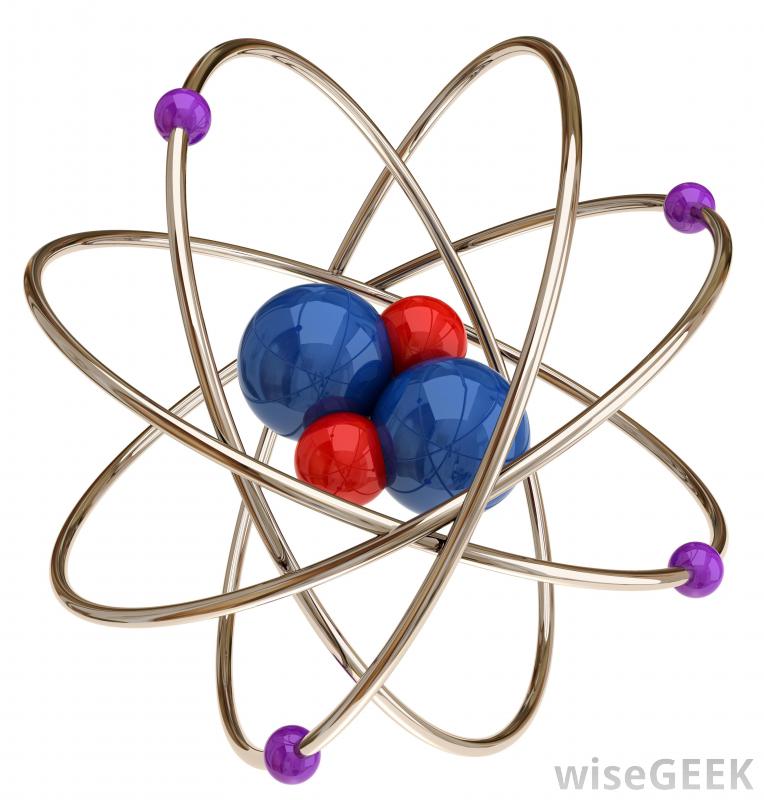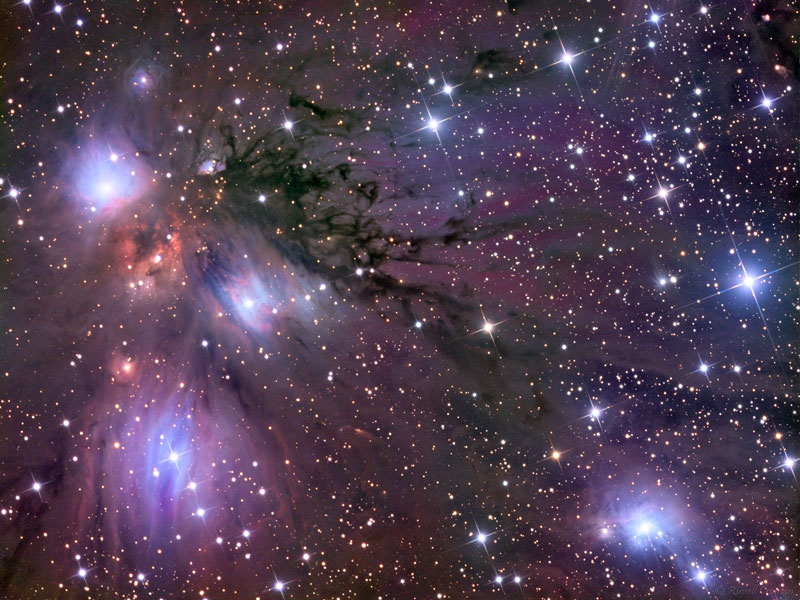



Life is confusing enough, but for the past century or so, four gratuitous confusions have been inoculated into our everyday consciousness, and I take great joy in calling their bluff. Some may be taken aback that I call them confusions, so deeply have they entered into our intellectual and imaginative habits. But since they scramble our brains regarding nearly everything we think we know, they deserve to be exposed for what they are. It goes something like this:
When we ask ourselves: 1) What is the material reality below and around me – the earth and the rocks and the seas, the chairs and the houses and the streets? What are they really? Enlightened and brightened by modern science, you might promptly reply: why, when you get right down to it, they are only atoms (or whatever bouquet of subatomic particles may have been highlighted by the latest pop science).
Next:
2) What is that expanse of spectacular, stationary stars that moves so serenely across the night sky and seems to breathe the very breath of stability and permanence? You can hardly wait to pronounce on this one: why, they aren’t stationary at all, you confidently correct me. Those stars are propelling through space at unimaginable velocities, running from each other as from the plague; they only seem to be standing still. At any rate, that’s what the astronomers have been telling us.
And now we turn to ourselves:
3) What is your body – that complex marvel of bone and muscle, nerve and brain, blood and lymph? Here you promptly furrow your brow: despite its deceptive façade, evolution teaches that our body is nothing more than the product of millions and millions of years of slow, accumulative factors of natural selection, that happen to have converged, without discernible plan, into this rather rag-tag composition we call our DNA.
And finally, and most disturbingly:
4) What is going on inside me? A world of thoughts, hopes, fears, beliefs, desires, passions and memories proliferate and interact without cease between my two ears. Where did all this come from? Well, the physicists gave us the answer to the first question, the astronomers to the second, and the Darwinian biologists to the third. Freud could hardly wait to put in his two cents, and here it is: all that psychological stuff going on inside of you is, in large measure, just the product of your unconscious. It foams up abundantly from the undigested ingredients of your childhood experience, or some other darkened basement of our psyche.
Now, in one variation or the other, these are the almost spontaneous replies we give today, and have done so ever since modern science became our only respectable way of knowing reality. These are the replies we give to questions about what really exists: whether below us (earthly matter), above us (the stellar universe), in our bodies (our biology) or in our minds (our inner experience).
But please take note of a curious trait of all these new, enlightened insights: though we call them insights, none of them are ever sighted or seen (or even imagined) at all! Whatever light is being shed on these supposed verities is not the sort that is visible to our physical eyes, or even to our imaginations. No one can see or imagine an atom or an electron as genuine constituents which make up the reality of the chair one sits on. Even when you patiently listen to a physicist explaining how atoms and molecules interact to make up the world, the chair still looks like a chair and still provides your buttocks with the support you expected when you sat upon it.
And every night, when you look up again at the starry sky, the constellations still look like they did the night before, and – despite the erratic movement of the planets and the even more obvious displacements of sun and moon – there is nothing else in our experience that seems more fixed than the fixed stars. Are we really wrong about that?
And what shall I say about our bodies? From the Venus de Milo to the David of Michelangelo, and on to all our fascination over and indeed addiction to human bodily beauty – and to the even more captivating magic peering eerily through human faces – am I to accept, lying down, that all this is just an accidental intersection of impersonal and random material forces?
In order to get to the “truth” about our fantastical bodies, do I need to engage in the futile effort of trying to imagine millions upon millions of finally unimaginable years that slowly lumbered toward the genetic math that made Scarlett Johansson look beautiful? And when we push open the heavy gate to our inner life, and find multi-universes of religion, philosophy, literature, painting, drama, dance, music, beauties, terrors, prospects, vistas, horizons (the list is interminable) – am I expected to take seriously any Viennese psychiatrist – however brilliant – or any other surveyor of the human mind, who says that all this is just the abreaction, or the epiphenomena, of this or that biological process, or this or that primordial conflict, or this or that anything?
Can I watch even 15 minutes of Shakespeare, or for that matter five minutes of the evening news, and swallow these millimetre-deep attempts at explanation without derision? If you listen closely to the inner logic of genuine science (not the temperamental ideology of scientism, but honest-to-goodness serious and sober science), you will discover that everything we know about pions and protons and electrons and all the rest is extraordinarily interesting indeed. However, it does not change, even for a nanosecond, the validity and centrality of your everyday experience of things. What is offered is only another perspective, and only that.
When you are chatting with a friend, you could also weigh them, measure their waist, take their temperature and check their cholesterol, but probably you would just as soon listen to their words and carry on the conversation. You instinctively know the perspective that is pertinent, and disregard the rest. And about the stars: it may be that from an extra-terrestrial perspective, their motions turn out to be quite, shall we say, “astronomical” in their behavior, but since none of us (I presume) are extra-terrestrial, that perspective is obviously going to be hugely irrelevant to anyone but a highly specialized astrophysicist.
And as for millions of years of evolution: again, more power to our biologists and may they keep up the good work. But please give up the bad work of trying to explain the obvious miracle of our extraordinary human body through the exclusive explanatory method of piecemeal process. Something or somebody – I am trying to shy away from theology here – is painting, or sculpting, or dreaming up a monument of beauty and meaning no mere material conglomeration, nor even a deer, a bear or a porpoise, can get close to. Something transcendent is clearly at work here. So to our evolutionary biologists, with due respect for their solid (but subordinate) contributions to understanding human nature, I say: try to look and gaze more and explain and reduce less.
And finally, when we contemplate what worlds have been created from within the human mind – in science itself, and in art, philosophy and religion – we are only fooling ourselves if we deny that its mysterious fecundity bears witness to an origin from a source above and beyond it. In no intellectually serious way can we account for this through a mere summing up of inferior factors from the naturalistic matrix of reductionist narratives. It just doesn’t work. And any honest scientist worth his salt will – at least after a couple of martinis – agree.
In conclusion, I offer my own counter-confusional theses:
1) The world of matter we meet with our five senses matters! (Pun very much intended!) It is solid, heavy, significant and sacramental. The matter itself insists on its consistency. Pay attention to it and take its appearance before our unaided senses at face value, at least as a matter of principle. Something of density and intensity is being conveyed to us as persons, and everything else you can analyze and dissect in its regard will only be intelligible if you attend first to this inaugural appearance.
2) The vault of the starry sky is stunningly, overwhelmingly and irreducibly marvelous, and deeply, though mysteriously, meaningful. If you cannot see that, you haven’t looked long enough. Keep looking. Poetry will help you here more than astrophysics, but not because it is less factual, but because, in this context, it is more.
3) As we move to our third counter-thesis, be careful, as here we are very close to home. The body is, finally, the most beautiful and mystifying of material realities, and we are weak and can be tempted to lift it to a pedestal beyond its merits. But recognize, at least, that it is profusely significant, and that it even speaks. The body expresses the spirit and is not merely its inert shelter or its temporary vehicle; it is its manifestation. Whatever may have been its origin or development, if you want to understand it, you first must look at it now. It is incredible, at times funny and clumsy, occasionally a bit scary, but most of all it speaks to us, and no where more than in its flower and fruit: the human face.
And now, finally, about that inner world:
4) Our minds affirm being, and being transcends everything we can see and touch, and travels light-years beyond the pretentious theories of naturalists. All of our culture, philosophy, religion and art are witness to its transcendent reach. If you want to get un-confused from all these contemporary confusions, simply learn to pay close attention to what obviously and insistently is. That attention will take you from chairs and tables, skies and stars, beautiful bodies and extravagant culture, all the way back to the Cause of it all. You will learn to attend to the Being of a God who is speaking softly, but eloquently, through all the things we touch, see and wonder about. And the reason we wonder at all about the world – and about the sky, our bodies and our souls – is because their gradually unfolded meaning is one long, but limited overture to infinity.


